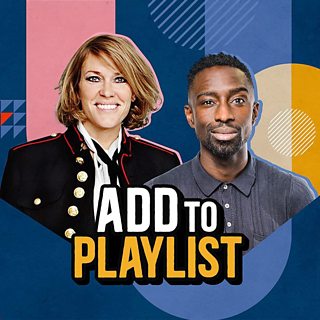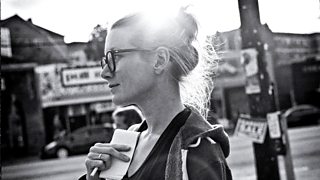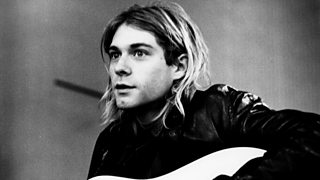A Brief History of the Playlist
By Jeffrey Boakye
We live in an era where we can personally curate hours of music from unlimited digital libraries. However, there was a time when a compilation CD could be the saviour of a party, or when recording your favourite songs on a cassette from the radio was your closest shot at becoming a DJ in your own home.
Βι¶ΉΤΌΕΔ Radio 4's Add to Playlist sees Cerys Matthews and Jeffrey Boakye ditching the now ubiquitous streaming algorithm and creating a human playlist spanning genres, eras and continents. In this article Jeffrey reflects on the art of the playlist and how, over generations, we've changed the ways we soundtrack our lives.

Side A
We’ve all done it.
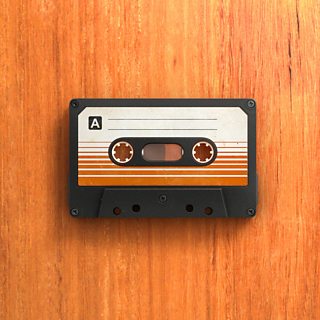
It was an early introduction to the idea that music is something that can be managed and curated, long before I knew what that word meant.Jeffrey Boakye
At some point in our lives, we’ve all stopped, and thought hard about that most profound of questions – what song to put on next.
It might have been flicking through a CD collection before a house party, or reading through the sleeve notes on a vinyl record. Maybe spinning the dial through radio stations, or arguing with family members in the car over which cassette tape to put in.
Nowadays, it’s most likely to be squinting into a phone, a forefinger hovering uncertainly over what to stream directly into your headphones. But irrespective of all these finer details, the end target is always the same – find a groove, and stay in it. Pun intended.
I’ve been playlisting my whole life. I probably should have started this article there to be honest. As a lover of music, it’s part of the ritual. Seeking out songs and compiling them into bespoke sequences to enjoy at leisure.
I remember, as a kid, creating my very own pause-mix cassette tapes, recorded straight off the radio, waiting hours to hear that one song that I knew had to be in the list. It was an early introduction to the idea that music is something that can be managed and curated, long before I knew what that word meant.
Crate Digging
Later, as my horizons broadened and my curiosity grew, it was all about mining my dad’s record collection for gems that had been sitting there for years, unknown to me, encased in those huge vinyl discs. Funk, soul, reggae, jazz, high-life, rock, gospel, blues… This was music that was born before I was, offering lines into the past that came alive in my listening present.
Skip forward a few years and it was all about lovingly compiled MiniDisc (remember them?) compilations, and hastily burned CDs for car trips with friends. I still have some of these – blank-faced CDs full of mp3s taken from laptops. It was pretty ephemeral – music that you couldn’t touch, or even see, brought to life in my playlisting imagination.

Let's Get Physical
In a way, you could argue that recorded music has always been a bit ephemeral, even when you had to carry it around in bits of plastic and various-sized shiny discs. This is why playlists are such an integral part of the music lover’s experience – they help us to make sense of the music that shapes us. And it also helps explain all those compilations that are made for us, designed to give ballast to songs, plural, that might otherwise just drift about in the airwaves.
Readers of a certain vintage will no doubt get a happy little nostalgia hit when I type the word Now!, italicised, with an exclamation mark. It’s the shortened version of Now That’s What I Call Music!, a compilation series that goes all the way back to 1983, the year after I was born, no less. For many, the Now! series might have been a first moment of appreciation for the art of musical curation, which might be why the series has endured into the 21st century.
No matter which generation you happened to have been born into, there’ll be a pop playlist that soundtracks some part of your youth. Go back a bit further and you might even remember those vinyl compilations that did a similar job as Now! before the arrival of cassettes and CDs. I pick them up in charity shops all the time – dusty, quaint records with generic titles like Pop Fever and Disco Hits, featuring fashions that have died out twice, and "as seen on TV" endorsements to let you know that this is really the good stuff. It was a different time.
A Human Playlist
It’s not 1983 anymore, and we don’t have to rely on big label compilation albums from the high street to tell us what to listen to. But, almost 40 years later, there is absolutely still a need for curious minds to make playlists that move us, and I don’t just mean on the dance floor.
That last paragraph is a pretty perfect introduction to Add to Playlist, a new show on Βι¶ΉΤΌΕΔ Radio 4. Hosted by Cerys Matthews and me, Add to Playlist is all about the wonder of playlists and the musical surprises they can reveal. Each week, either Cerys or I will select what we’re calling a master track, which will then act as a springboard for a musical journey spanning eras, genres, artists, musical styles and continents. It’s a playlist in real time – a loving, musical vivisection that explores all manner of connections, between otherwise disparate tracks.
Along the way, we’ll be joined by guest experts – musicians who can help explain the mechanics behind the magic. Here, the conversation is everything. It’s a meeting of hearts and minds (and ears), where our respective knowledges and passions intersect with our unending curiosity. No two playlists are the same, and exploring the hows and whys behind each other’s selections is truly an exhilarating thing. Add to Playlist really does do exactly that – it adds to your appreciation of music and its universally human glory.
A (very) Brief History of the Playlist
- 1918: An apparatus that automatically changed records is patented, leading to one of the first selective jukeboxes being introduced in 1927.
- 1935: American radio personality Walter Winchell coins the term "disc jockey" to describe radio announcer Martin Block, the first person to gain fame for playing popular recorded music over the air.
- 1964: The mass production of blank Compact Cassette tapes begins in Hanover, Germany, eventually allowing consumers to record and re-order music.
- 1971: Motown Chartbusters Volume 3 becomes the first non-soundtrack compilation album to reach number 1 in the UK charts.
- 1972: The first recorded use of the word ‘playlist’ occurs, used to describe the curations of radio DJs in America.
- 1982: CDs are first made available to the public and quickly become the most efficient way of storing music.
- 2001: Apple release the iPod, allowing you to curate and “shuffle” your own library of digital music.
- 2001: Rhapsody (later known as Napster) becomes the first streaming on-demand subscription service to offer unlimited access to a library of digital music.
- 2005: Streaming service Pandora Radio uses algorithms and a complex song sorting program to create personalized radio stations based on listener's preferences.
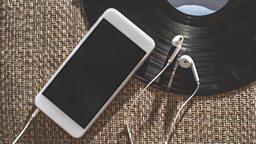
Sonic Horticulture
Making a playlist feels a lot like an act of sonic horticulture – selecting choice tracks to nurture something new. You can tell from that last comparison that making a playlist is an act of love. It requires care, dedication and knowledge. Music fans are united by this spirit of love. We spend our lives seeding and pruning our musical trees, and the beauty of music is that it’s evergreen. A song transcends time, a playlist is a time machine, and the joy ever present.
A song transcends time, a playlist is a time machine, and the joy ever-present.Jeffrey Boakye
So in many ways, Add to Playlist is simply the latest iteration of something I’ve been doing my whole life. From those clumsy cassette tapes to the studios of Βι¶ΉΤΌΕΔ Radio 4, I’ve been nurturing a skill that has grown with me. Now it’s time to add to that, with new sounds and new-found friends, and see where the journey branches out to next.
Listen to Add to Playlist on Βι¶ΉΤΌΕΔ Sounds
More from Radio 4
-
![]()
Add to Playlist
Cerys Matthews and Jeffrey Boakye create a playlist no computer could.
-
![]()
Laura Barton's Notes on Music
The music writer presents a series of meditations on the enduring qualities, appeal and intent of pop music.
-
![]()
Teen Spirit: Nevermind at 30
Douglas Coupland examines how Nirvana’s Nevermind changed the outlook of a generation.
-
![]()
Front Row
Live magazine programme on the worlds of arts, literature, film, media and music.
